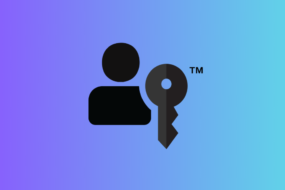
Due to its robust security measures, consistent performance, and intuitive interface, Ubuntu is one of the most well-known Linux distributions. Comprehending the password management mechanism of this platform, especially with respect to the “default password,” is essential, whether you’re new to it or just need a reminder.
In-depth analysis of linux ubuntu default root password policy and the reasons behind its approach, which sets it apart from several other Linux distributions, are the main goals of this article.
What Is the Linux Ubuntu Default Root Password?
Despite the name “default ubuntu root password” giving the impression that it does, Ubuntu does not pre-set a default password for its root account. Instead, it grants administrative access using a programme called sudo, which is short for “superuser do.” You are prompted to establish a primary user account after installing Ubuntu. By default, this account has regular user permissions rather than administrator ones. You will need to use the sudo command in order to perform administrative tasks.
Why use this strategy? First of all, it reduces the dangers of having a single, extremely strong root account that might be the target of malevolent attackers. By limiting the need for administrative access, the sudo mechanism promotes the idea of least privilege.
How to Use the Linux Ubuntu Default Root Password (Or Not Having One)
You can use the sudo command as your primary tool for system administration because Ubuntu does not set a default ubuntu root password. Ubuntu does not establish a default ubuntu root password, therefore your go-to tool for system administration is the sudo command. This is a detailed how-to:
Launch a Terminal:
Use the keyboard shortcut Ctrl+Alt+T to access the “Terminal” application or use the apps menu.
Put the Command in Here:
Enter your administrator command and put sudo before it. For example, you could execute sudo apt update to update your system.
Authenticate:
You will need to enter your own user password after pressing Enter.
Execute:
Your administrative command will be carried out after a successful authentication.
Using sudo su or sudo -i, you can obtain a root shell for tasks requiring several administrative commands. Though these commands provide full access to the system, exercise caution. Integrity of the system may be jeopardized by improper usage. For the majority of users, it is advised to always utilize separate sudo commands.
Know more: What Does DTB Meaning? DTB Means Texting, Am I Right?
When to Use Sudo Su or Sudo -i for Extended Root Access
You may eliminate the requirement to precede every command with sudo by using sudo su to switch to the root account, which gives you access to a root shell. In order to carry out this:
Open a Terminal:
The same as previously.
Changing to Root:
After entering sudo su, press Enter.
Consistency:
Enter the password for your user and press Enter.
Root Shell:
Now that you’ve got a root shell, you can run several commands at once without having to use sudo before them.
If you prefer a more regulated setting, you may also use sudo -i. Compared to sudo su, this command is often safer because it initializes a new shell, sets several environment variables, and provides you with the environment settings of the root user.
Extra Things to Think About When Managing Ubuntu Systems
Knowing about root and sudo accounts is only the beginning. The system administration of Ubuntu entails:
User Accounts:
This feature improves system security and customization by allowing you to create several accounts with different levels of privilege.
File Permissions:
Ubuntu controls access to files and directories using a permissions scheme. Effective system administration requires a solid understanding of permissions.
Background Services:
Networking and printing are examples of background services that operate in the background. When troubleshooting, understanding how they function can be quite helpful.
Software installations and upgrades on Ubuntu are facilitated by the package management system. Simpler system maintenance can be achieved by being familiar with this utility.
With no default password and the use of the sudo command for administrative operations, Ubuntu’s management of the root account is intended to improve system security. By minimizing risks, this setup promotes best practices in security.
It is important to understand how this method operates for effective Ubuntu system administration, even though it may not be the same as other Linux variants.





